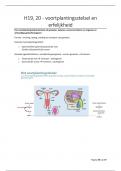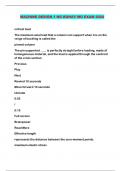Summary
Samenvatting Statistiek Data-Analyse SPSS 2023
- Course
- Institution
Dit document bevat een samenvatting van de te kennen theorie, alsook de stappen om correct gebruik te kunnen maken van de verschillende testen met SPSS. Het is opgebouwd volgens een stappenplan waarbij beknopt informatie wordt gegeven. Hierdoor is het gemakkelijk te begrijpen en gebruiken. Ik heb e...
[Show more]












